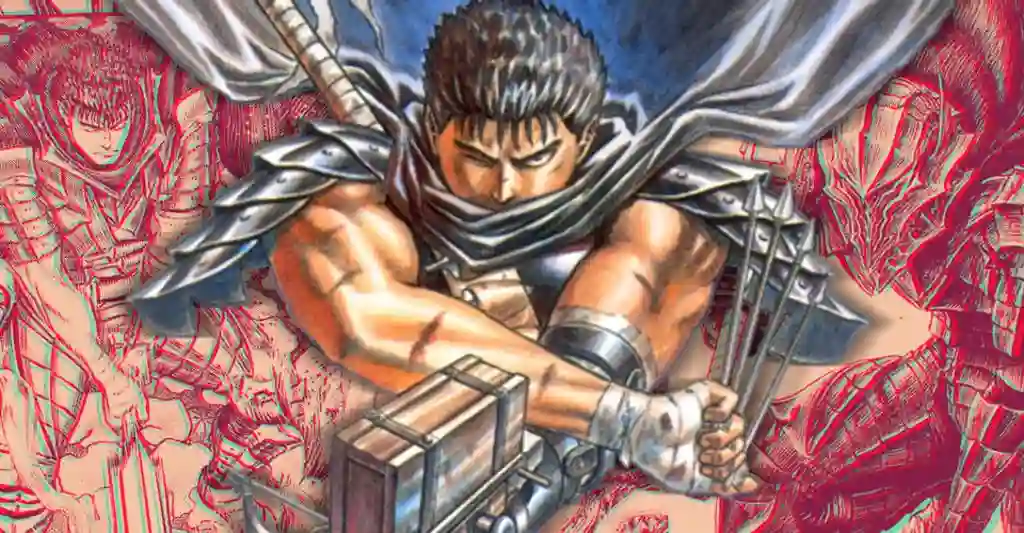Within the dark and intricate narrative of Kentaro Miura’s Berserk, the Behelit stands as a mysterious and potent artifact, its presence weaving a complex web that shapes the destinies of characters and propels the story into the realms of the supernatural. In this article, we explore the profound significance of the Behelit in the plot of Berserk, unraveling its enigmatic nature and examining the pivotal role it plays in the unfolding narrative.
The Behelit’s Mystical Properties:
The Behelit, a small, egg-shaped object, is no ordinary trinket. It possesses mystical properties that transcend the boundaries of the mortal realm. The Behelit is imbued with the ability to resonate with the despair and inner darkness of its possessor, acting as a catalyst for supernatural events. When the Behelit activates, it opens a gateway to the dimension of the God Hand, a malevolent pantheon of demonic entities that govern the fate of the world.
The Behelit becomes a conduit between the mortal realm and the supernatural, serving as a key element that bridges the gap between the human condition and the cosmic forces that govern Berserk’s universe.
The Eclipse and Sacrificial Ceremony:
The Behelit’s most significant role is revealed during the Eclipse, a nightmarish event that serves as a turning point in the Golden Age Arc. As the Band of the Hawk faces the betrayal orchestrated by Griffith, the Behelit activates in response to Griffith’s overwhelming despair and ambition. This sets in motion a sacrificial ceremony that transforms Griffith and several members of the Band into demonic entities.
The Eclipse marks a harrowing culmination of the Behelit’s power, showcasing its ability to alter the course of destiny and unleash supernatural horrors upon the mortal realm. The sacrificial ceremony, facilitated by the Behelit, propels Berserk’s plot into a dark and twisted trajectory, leaving characters and readers alike grappling with the consequences of this unholy pact.
Symbolism of the Behelit:
Beyond its narrative function, the Behelit carries profound symbolic weight in Berserk. Its egg-like form is laden with imagery associated with rebirth, transformation, and the cyclical nature of existence. The Behelit becomes a symbol of the inescapable destiny that binds characters to the cosmic forces at play in the Berserk universe.
The recurrence of the Behelit across various story arcs reinforces its symbolic significance, emphasizing the inescapable intertwining of mortal lives with the supernatural machinations governed by the God Hand. Whether held in the hands of a protagonist or antagonist, the Behelit serves as a visual motif that heralds moments of great consequence and cosmic significance.
Individual Behelits and Personal Tragedies:
In addition to its overarching significance, individual Behelits are associated with characters and their personal tragedies. The Behelit becomes a thematic thread, tying together the disparate narratives of characters like Griffith, Guts, and others who encounter these mystical artifacts. Each Behelit resonates with the unique despair and trauma of its possessor, driving them towards a moment of choice that will irrevocably alter their fate.
The personalization of Behelits contributes to the emotional depth of Berserk’s narrative. Readers bear witness to characters grappling with their inner demons, and the Behelit becomes a tangible representation of the inner darkness that haunts the souls of those who possess it.
Casca’s Behelit and Feminine Symbolism:
The inclusion of Casca’s Behelit introduces a layer of feminine symbolism to the narrative. Casca, a central and complex character, carries a Behelit that contrasts with the traditionally ominous and masculine associations of the artifact. Her Behelit becomes a focal point during the Conviction Arc, symbolizing the vulnerability and strength inherent in her character.
Casca’s Behelit adds nuance to the symbolic depth of the artifact, challenging traditional interpretations and expanding the narrative exploration of despair, sacrifice, and the intertwining of feminine agency with supernatural forces.
Fate and Free Will:
The Behelit raises profound questions about the balance between fate and free will in the world of Berserk. While characters may wield agency in their choices, the Behelit acts as a cosmic arbiter that nudges the narrative towards predetermined outcomes. The interplay between characters’ decisions and the inexorable pull of destiny, as symbolized by the Behelit, creates a tension that defines the philosophical underpinnings of Berserk.
The juxtaposition of free will against the backdrop of a predetermined fate underscores the existential themes that permeate the series. Characters grapple with the consequences of their choices, even as the looming presence of the Behelit hints at a grander design governing their lives.
The Behelit as a Moral Dilemma:
The activation of the Behelit forces characters into moral quandaries that test the limits of their humanity. The choice to sacrifice loved ones in exchange for transcendent power becomes a recurring theme, challenging characters’ values, morality, and the very essence of their souls.
The Behelit, with its power to grant unimaginable abilities at a staggering cost, becomes a crucible that forces characters to confront the darkest corners of their hearts. The moral dilemmas posed by the Behelit resonate with readers, inviting introspection into the nature of sacrifice, ambition, and the lengths to which individuals are willing to go in pursuit of their desires.
Conclusion:
In the intricate tapestry of Berserk, the Behelit stands as a symbol of cosmic significance, a conduit that channels the supernatural into the mortal realm. Its mystical properties, symbolic depth, and role in catalyzing pivotal events make it a linchpin in the overarching narrative. The Behelit is not merely a plot device; it is a thematic exploration of fate, free will, and the profound consequences of choices made in the shadow of despair.
As readers navigate the treacherous landscapes of Berserk, the enigmatic presence of the Behelit adds layers of complexity to the characters’ journeys and the overarching narrative. Kentaro Miura’s masterful storytelling ensures that the Behelit’s significance reverberates not only as a supernatural artifact but as a philosophical and emotional cornerstone that elevates Berserk into a realm of storytelling unparalleled in its depth and complexity.


